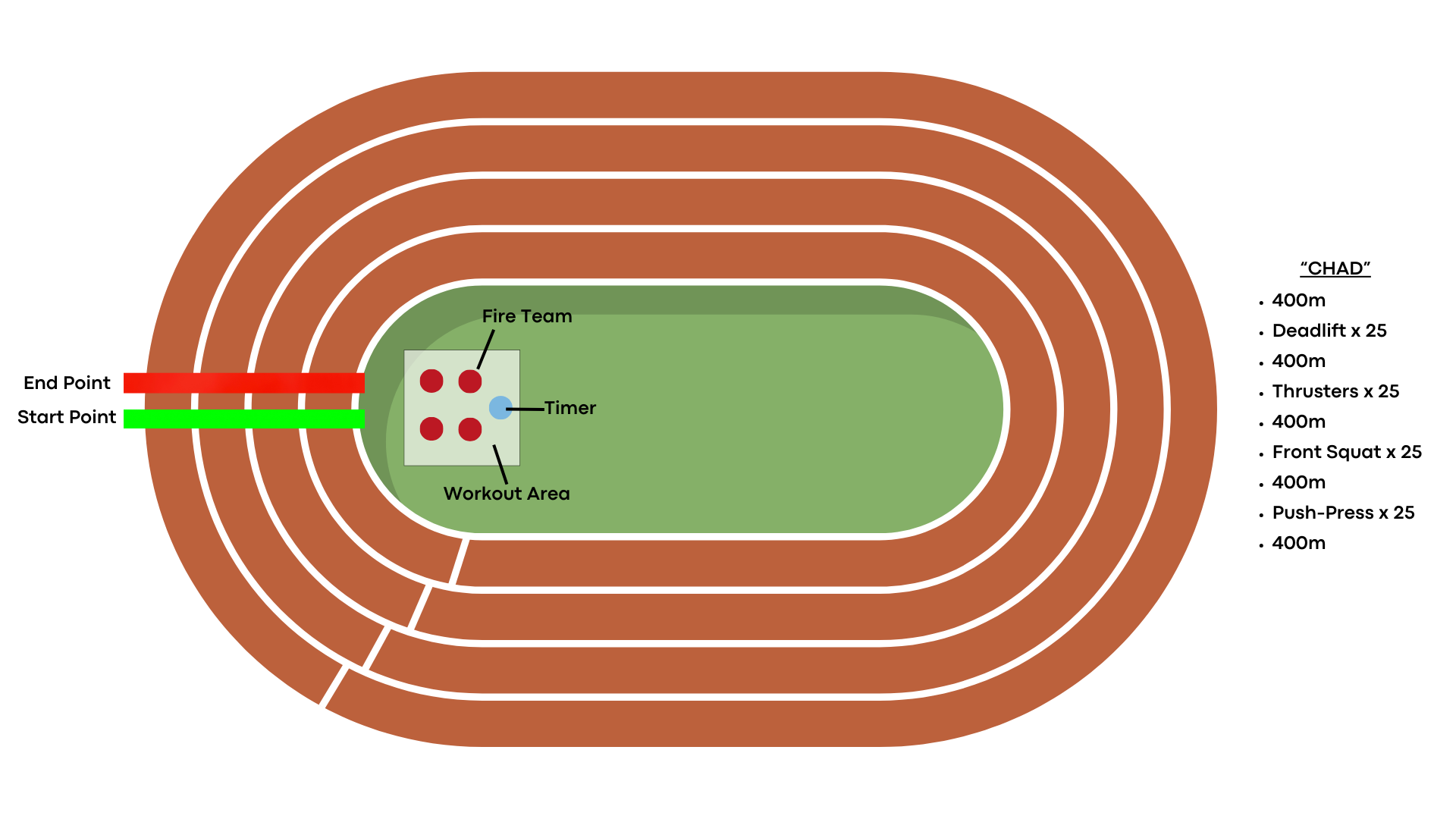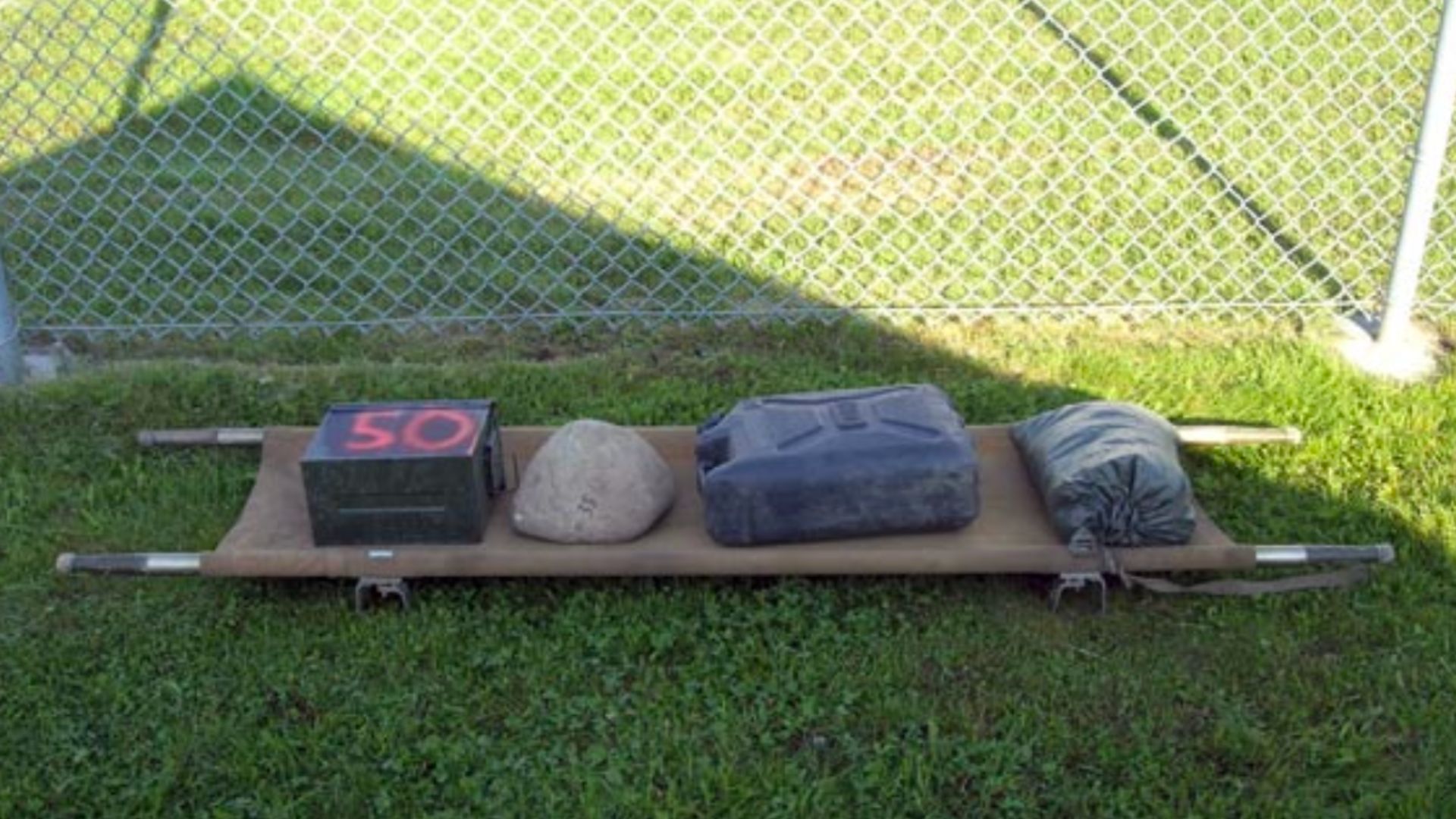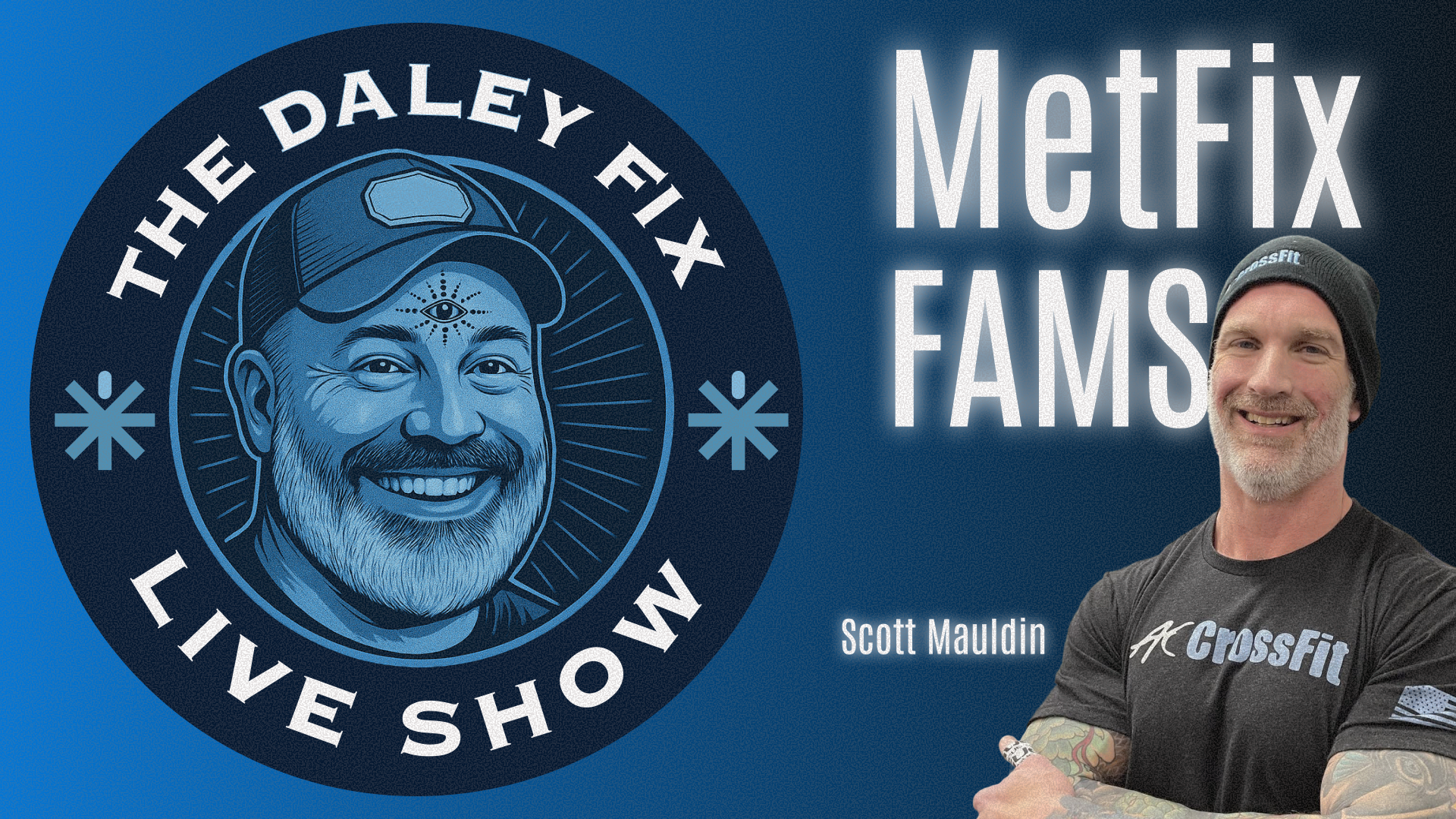Introduction
The organization and format of this article may be confusing for some; it may appear to be written in a foreign language. However, to others–namely, military officers and senior non-commissioned officers–it will be instantly familiar and comprehended. “The Grinder” is produced following the NATO operations order format. An operations order (OPORD or Op O) is a directive issued by a commander to his subordinates in order to effect the coordinated execution of a specific operation (Ranger Handbook, SH 21-76). For this article, the operation or task is a group workout.
The five-paragraph NATO OPORD format, and annexes, are used to organize the commander’s direction, to ensure a common operating picture, and to assist subordinate leaders in fully understanding the commander’s intent and what results he wants the operation to produce–the end state. It is a logical, clear, and concise method of conveying a plan. The five standard paragraphs that make up the OPORD are: SITUATION, MISSION, EXECUTION, SERVICE SUPPORT, and COMMAND AND SIGNAL.
Because the CrossFit Journal is read by a wide range of military units in the United States and around the world, terms from the NATO glossary of abbreviations, AAP-15(2006), are used whenever possible to clarify directions. The primary audience for “The Grinder” is the military and law enforcement community. However, any agency conducting group physical training will find the content useful, once they get used to the format.
For an OPORD to be effective, it must 1) be constructed so that personnel understand the intent, their own tasks, and the context of those tasks; 2) inform personnel what effect they are to achieve and why it needs to be achieved (for the “Grinder”, it is to achieve unit cohesion and combat fitness under fatigue conditions); 3) identify the resources required to execute the task; and 4) impose a minimum of control measures to ensure freedom of action and flexibility.
“The Grinder” is a direct result of the requests generated by last month’s CFJ article “Large-Group CrossFit Training” for additional articles addressing platoon and squad combat fitness training.
CFHQ
Santa Cruz, CA
USA
01 Jul 06
OPS 01
Operation Order 01 – OP GRINDER
Task Organization: Annex A
1. SITUATION
a. General.
-
- The contemporary operating environment facing coalition forces today is complex, diverse, diffuse, and lethal. It is an asymmetrical battle space that is extremely dangerous constantly evolving. Coalition forces are required to conduct a wide range of tasks simultaneously within an area of operations. There has been an operational shift from the traditional “third-generation werfare” to the current “fourth-generation warfare” model. This evolution has produced an operational environment that focuses mainly on complex terrain such as mountains, built-up areas, and jungles. Due to the evolving threat facing coalition forces, military organizations have had to develop new doctrine, tactics, techniques, and procedures to be effective.
- Combat fitness and survivability is one of the critical areas currently being examined by coalition armies. Recent missions in Afghanistan and Iraq have shown that soldiers require real combat fitness to be effective on today’s battlefield. Just as doctrine and tactics must be amended and enhanced to allow for success against these new threats, so must military fitness training.
- Last month’s CrossFit Journal article “Large-Group CrossFit Training” has generated many requests from readers for future articles addressing platoon or squad combat fitness training.
b. Grinder’s Intent.
-
- Purpose. The purpose of OP GRINDER is to produce group workouts that utilize the equipment commonly found within a military unit. The workouts will address both garrison and austere training protocols for platoons, squads, and fire teams. They will be scalable and flexible to allow for a wide range of utilization—to include troops conducting basic training through to elite combat operators. The format and language will be based on military organizations; however, this is just for ease of direc- tion. The workouts are amendable to suit any agencies or organizations that conduct group physical training.
- Method. Initially, “The Grinder” will be produced periodically. However, based on demand from the military/LEO community, the column could become a monthly addition to the CFJ. It will provide a workout, to include direction, description, and graphic representation. Each “Grinder” will be produced in an Operations Order (Op O) format that all NATO personnel are familiar with. This will allow for a common operating picture, regard-less of unit. To ensure a successful transition to future training, there will be “Be Prepared to” (BPT) or “Follow-on” tasks in the EXECUTION paragraph. This will allow leaders to use concurrent activity to prepare for the next workout. These preparations could include instructing and rehearsing skill moves such as the clean or overhead squat; conducting reconnaissance of required or potential future training areas, or obtaining specific logistics for the execution of the next phase of the workout. An example would be “BPT: conduct a workout requiring 1 x sandbag and 1 x .50 cal ammo can filled with sand per four man fire team, and a 400-meter running route. Troops will have to be competent with the front squat and deadlift to execute the next WOD (workout of the day).” The BPT tasks will set the conditions for success during the next month’s workout. An annex will accompany the Op O to provide a graphic representation of the workout set-up and the locations of key personnel or equipment. The Op O will provide direction on the effects desired from the workout; however, it will be the leader’s responsibility to determine how best to accomplish these effects based on his organization’s skill level, available equipment, and location.
- End State. Units will be equipped, organized, and prepared to conduct individual and group combat fitness at the company, platoon, or squad level in garrison and/or austere environments.
2. MISSION
“CHAD”: run 400m /25 deadlifts/ run 400m /25 thrusters / run 400m/25 front squats / run 400m /25 push-presses / run 400m
3. EXECUTION
a. Concept of Operations.
-
- Intent. Complete each of the prescribed exercises as quickly as possible in a safe manner. This is a “task-specific” team workout. The purpose of this workout is to develop cohesion and fitness under fatigue conditions while executing a simulated combat casualty evacuation.
- Scheme of maneuver. Each squad will be divided into two teams of four. Each team will have a stretcher, a water jerry can filled with water (45 lbs.), two .50-cal ammo cans filled with sand (50 lbs. each), a sandbag (50 lbs.), and a rock (45 lbs.). All the teams will start at the same time from the same location. They will load the sandbag, water jerry, rock, and one .50-cal ammo can onto the stretcher (total weight 190 lbs.) and run/walk 400m carrying the stretcher. When they return to the start point, each member of the team will secure a piece of equipment and do aspecific exercise for 25 reps. The exercises are: deadlift, the two .50-cal ammo cans (one in each hand) for 25 reps, perform thrusters with the rock for 25 reps, front squat with the sandbag for 25 reps, and push press the water jerry for 25 reps. Once each member of the team has completed the 25 reps, they load the equipment back on the stretcher and complete another 400m run/walk. When they return to the start position again, each member will conduct 25 reps of another exercise with a different piece of equipment. This rotation will carry on until each member of the team has done all four exercises. Upon completion, each soldier will have done 25 reps of deadlifts, thrusters, push-presses, and front-squats and run a total of 2km (5 •’5f 400m).
- Main Effort. The safety of all personnel, and the development of unit cohesion through shared challenge and hardship.
- End State. The successful completion of all exercises by each individual in the squad, and the unit prepared to carry on with further training.
b. Coordinating Instructions.
-
- Team Organization. Squad leaders can organize the four-man team however they want. It is a leadership decision on how best to deploy each team to accomplish the mission. If the squads cannot be grouped into fire teams of four, add a fifth soldier to the team. The fifth exercise to be completed will be 25 burpees. For the 400m-casualty carry, the fifth team member can rotate into carrying the stretcher during the run.
- Scaling. The workout can be conducted in PT gear or full battle gear to include vests with plates, depending on the fitness levels of your soldiers. The four pieces of equipment selected—sandbag, water jerry, ammo cans, and rock—are for austere conditions. If you have the resources, you can use dumbbells or barbells. The weight of the equipment or number of reps can be increased or decreased based on the skill level of your troops. The weight of 190 lbs to be placed on the stretcher will simulate the weight of a casualty.
- Scoring. The finish time is based on the combined time for the complete squad. Therefore, if Team A and B make up the first squad, and their times are 26:30 and 30:02, the squad’s workout time is 56:32. The squad that has the lowest combined time wins.
- Follow-on Tasks. The next workout will require a 400m running route, pull-up bars, and M2 Bradley 25mm ammo cans filled with sand. The preferred ratio is one 25mm ammo can for each soldier; however, if this is not possible, one 25mm ammo can per three soldiers is acceptable. If you cannot obtain 25mm ammo cans, find something that weighs about 70 lbs and can be lifted overhead: a rock, a barbell, a dumbbell, etc.
4. SERVICE SUPPORT
a. Equipment Weights.
| Ammo Can Nomenclature | Quantity/Size | Type | Weight | Contents |
|---|---|---|---|---|
| Cart 25mm APFSDS-T | 30 rds | PA125 | 70 lbs | Sand |
| Cart cal .50 4B/1T | 100 rds | M2A1 | 50 lbs | Sand |
| Cart 5.56mm ball clip | 910 rds | M2A1 | 30 lbs | Sand |
| Cart 7.62mm belt 4B/1T | 220 rds | M19A1 | 20 lbs | Sand |
| Jerry can | 20 liters | 7240-21-852-5150 | 45 lbs | Water |
| Sand bag | 14 in •’5f 26 in | 8105-00-142-9345 | 50 lbs | Sand |
| Stryker tire and rim | 1 | 2610-20-000-7697 | aprx 350 lbs | NA |
b. Equipment Requirements. Each 4- or 5-man fire team will require one rock (45 lbs.), one jerry can (45 lbs.), two .50-Cal ammo cans (50 lbs. each), one sand bag (50 lbs), and one stretcher.
c. Time Recording. One stopwatch and writing material to record each fire team’s and squad’s workout times.
5. COMMAND AND SIGNAL
a. Timer/Score Recorder. Only one timekeeper is required for all squads. This soldier will record the times of all the fire teams when they finish the workout. He is positioned at the start line/exercise area for command and control purposes. All fire teams begin the workout on his command. Once a fire team has completed all the exercises, they inform the timekeeper, who records all times.
b. Instructor/Coach/Safety. To ensure proper conduct of the workout, use of correct exercise form, and safety of execution, a designated member of the platoon can fill this billet. An injured soldier who cannot participate in the PT or another member of the company can also perform this duty. Although not preferred, the platoon leader or platoon sergeant can also serve in this key position, especially if the target training audience is the individual squads.
Annexes:
Annex A – Workout Diagram
Annex B – Equipment
Annex C – Exercises
This workout is dedicated to LTC. Chad Buehring, US Army (SF) who selflessly gave his life to liberate the oppressed. Fair winds, Chad.

Annex B – Equipment

Annex C – Exercises
This article, by BSI’s co-founder, was originally published in The CrossFit Journal. While Greg Glassman no longer owns CrossFit Inc., his writings and ideas revolutionized the world of fitness, and are reproduced here.
Coach Glassman named his training methodology ‘CrossFit,’ which became a trademarked term owned by CrossFit Inc. In order to preserve his writings in their original form, references to ‘CrossFit’ remain in this article.
Greg Glassman founded CrossFit, a fitness revolution. Under Glassman’s leadership there were around 4 million CrossFitters, 300,000 CrossFit coaches and 15,000 physical locations, known as affiliates, where his prescribed methodology: constantly varied functional movements executed at high intensity, were practiced daily. CrossFit became known as the solution to the world’s greatest problem, chronic illness.
In 2002, he became the first person in exercise physiology to apply a scientific definition to the word fitness. As the son of an aerospace engineer, Glassman learned the principles of science at a young age. Through observations, experimentation, testing, and retesting, Glassman created a program that brought unprecedented results to his clients. He shared his methodology with the world through The CrossFit Journal and in-person seminars. Harvard Business School proclaimed that CrossFit was the world’s fastest growing business.
The business, which challenged conventional business models and financially upset the health and wellness industry, brought plenty of negative attention to Glassman and CrossFit. The company’s low carbohydrate nutrition prescription threatened the sugar industry and led to a series of lawsuits after a peer-reviewed journal falsified data claiming Glassman’s methodology caused injuries. A federal judge called it the biggest case of scientific misconduct and fraud she’d seen in all her years on the bench. After this experience Glassman developed a deep interest in the corruption of modern science for private interests. He launched CrossFit Health which mobilized 20,000 doctors who knew from their experiences with CrossFit that Glassman’s methodology prevented and cured chronic diseases. Glassman networked the doctors, exposed them to researchers in a variety of fields and encouraged them to work together and further support efforts to expose the problems in medicine and work together on preventative measures.
In 2020, Greg sold CrossFit and focused his attention on the broader issues in modern science. He’d learned from his experience in fitness that areas of study without definitions, without ways of measuring and replicating results are ripe for corruption and manipulation.
The Broken Science Initiative, aims to expose and equip anyone interested with the tools to protect themself from the ills of modern medicine and broken science at-large.
Support the Broken Science Initiative.
Subscribe today →
recent posts
Scott Mauldin shares how he is incorporating MetFix at MetFix FAMS.



















